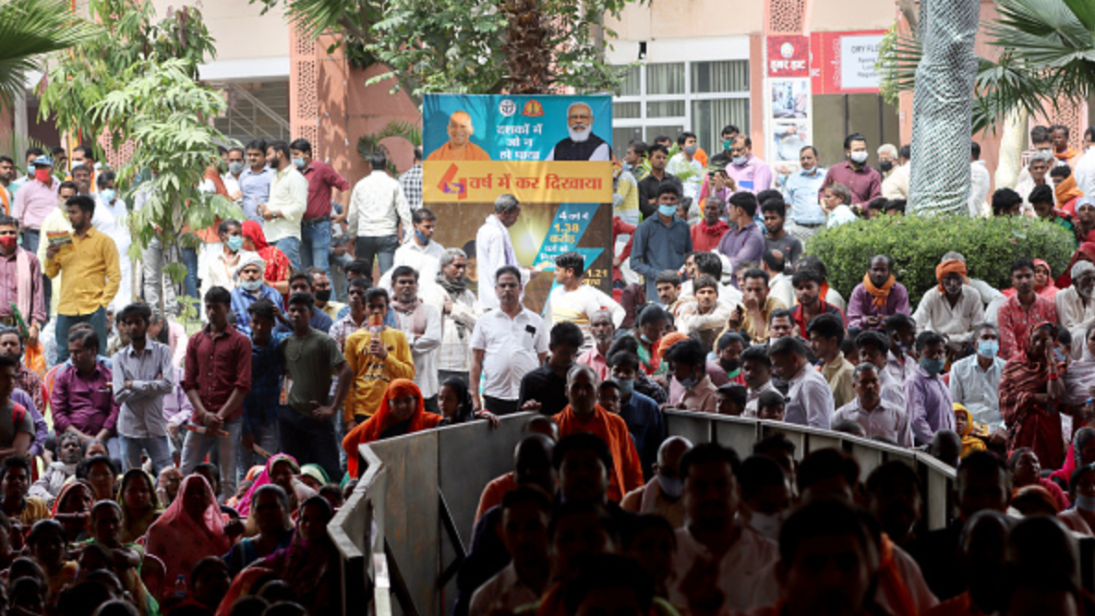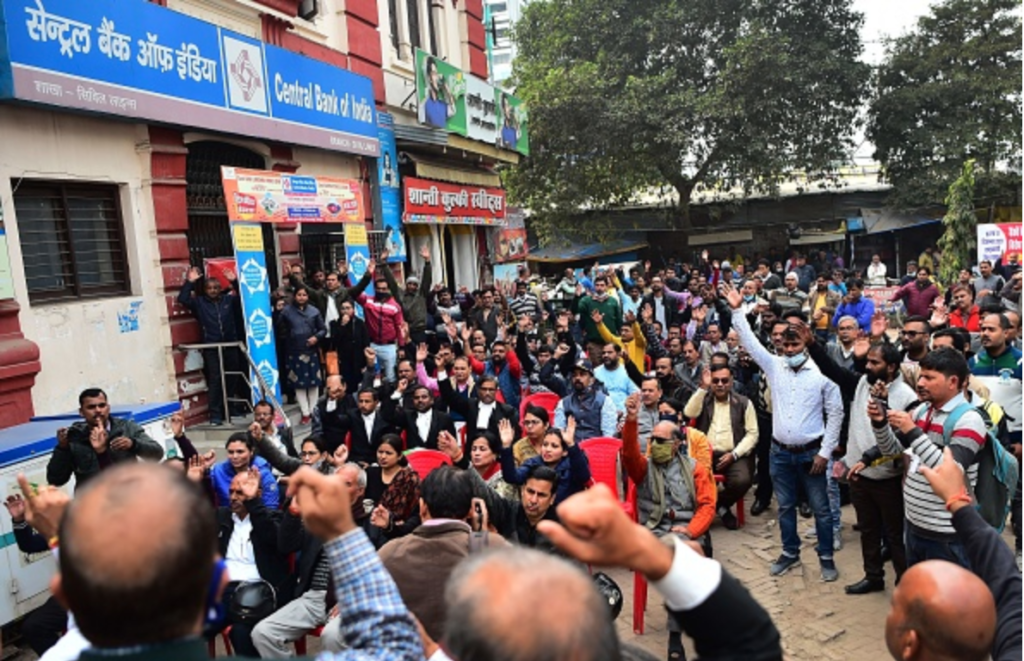
Indian Prime Minister Narendra Modi recently visited his constituency Varanasi in poll-bound Uttar Pradesh (UP) where he stated that the development of Varanasi would form the bedrock of the development of India. In his speech, he re-emphasized the “development agenda” of the BJP that had previously propelled the Indian saffron party to twin electoral victories in the 2014 and 2019 general elections. This messaging had also contributed to the party’s win in the UP state elections in 2017, when the BJP came to power with Purna Bahumat (a complete majority), winning 312 seats out of 403 seats in the state legislature. Uttar Pradesh is a bellwether electoral state in India: an electoral victory in UP in the assembly elections often translates into an electoral victory at the national level. This is in part because the state holds the key to 80 electoral constituencies at the national level—the maximum for any state in India.
These electoral victories were driven by the BJP’s proposed development agenda that aspires to achieve the “socio-economic development” of the country through the adoption of good governance practices and infrastructure development. This agenda previously resonated with the population of Uttar Pradesh—the state houses 37.79 percent of India’s poor. However, despite the success of its messaging and rhetoric, the agenda has failed in practice: it does not promote universal development and excludes the marginalized populations. While the BJP attempted to implement its economic development agenda in its first term in government, since 2019 its policies in UP have acquired majoritarian overtones. This has only accelerated in light of the economic downturn caused by the pandemic.
Although the rhetoric of holistic development in UP and other parts of India has led the BJP to victory, it has not facilitated concrete development in real terms, especially at the grassroots level. There is a significant disjuncture between what is construed as development to the Indian people—used to solidify support among the BJP base during elections—and what constitutes actual development and economic progress. These dynamics are likely to decide the state election results in 2022.
Origins of the Development Agenda
The idea of development popularized today by the BJP owes its origins to the Gujarat model of development, overseen by Modi in his time as Chief Minister. The Gujarat model emphasized infrastructure and industrial development and focused on the construction of airports and highways for better rural-urban connectivity.
There is a significant disjuncture between what is construed as development to the Indian people—used to solidify support among the BJP base during elections—and what constitutes actual development and economic progress.
The Modi-led BJP came to power in the 2014 national elections banking on this development model, promising to replicate it at the national level. They used this development model to win assembly polls across Hindi heartland states UP, Bihar and Madhya Pradesh and facilitated their victory in the 2019 national elections. In this quest for electoral victory, however, the BJP neglected that a growth model for states like Gujarat—which had clocked high growth rates—had a tradition of entrepreneurship matched by public welfare schemes that aided its economic development. This could not easily be replicated across other Indian states. This did not stop the BJP from pursuing victory in Uttar Pradesh—a state that holds the key to power in New Delhi.

Uttar Pradesh & Development Politics
Electoral victory in Uttar Pradesh came to the BJP through a management of castes ratios with the Other Backward Castes (OBCs), or Dalits—a socially disadvantaged group that formed a significant proportion of the BJP’s support. This is a shift from the past where OBCs opposed the BJP, which historically catered to upper castes. While campaigning, Modi relied on his caste identity as an OBC to garner votes. The BJP won the election in large part because of Prime Minister Modi’s personal popularity—at least in political rhetoric, Modi “fulfilled” his poll promises and delivered Vikas (development) to the people, rendering Uttar Pradesh “the second largest economy of the country.”
This feat can be attributed to the government commissioning large-scale highway construction projects that cover a distance of 1,788 kilometers and cover the length and breadth of UP. While these projects have improved connectivity, their construction has been marred by completion delays, farmers’ complaints of inadequate compensation, and land acquisition hurdles. For example, the Purvanchal Expressway—conceived and brought to fruition during the Yogi Adityanath-led BJP government—“saw initial tenders being canceled and fresh tenders issued later.” The principal opposition party, the Samajwadi Party led by Akhilesh Yadav, has said that the quality of the road equipment has been compromised over the course of the construction, rendering the project untenable.
Muslims in the state—despite having enjoyed political power historically and forming a significant proportion of the population of the state today—have retreated as a political class. The BJP’s tacit support for political violence against marginalized communities (and specifically Muslims) juxtaposes the practices that the party employed in the 2017 election when it attempted to garner support among Muslim women. This included through bans on archaic practices like “Triple Talaq” that had allowed Muslim men to divorce their wives instantly through verbal pronouncements. The BJP has ceased this limited engagement and has instead mocked the Muslim community’s socio-cultural practices, a hardline Hindu nationalist turn that alienates the state’s largest minority population ahead of the 2022 elections.
While the BJP is reaching out to different constituents—including farmers, by announcing irrigation projects, and women through advocacy campaigns—it is portraying itself primarily as the party of Hindutva. Its brand of Hindutva is aligned with Brahminical norms, alienating constituents like OBCs ahead of the incoming elections. The BJP’s political allies in Uttar Pradesh are unhappy with these developments and are demanding substantial representation in the state government.
Resonance at the National Level
Amidst this decisive shift towards Hindutva politics, 2022 electoral results hang in a balance with regional parties like the Samajwadi Party trying to make a comeback in UP by creating a “rainbow coalition” that represents all social and political classes in the state. The Samajwadi Party is attempting to reinvent itself as an alternative to the BJP by offering populist incentives to OBCs and minority groups in the state. The party is banking on its strong socialist credentials to counter the BJP’s majoritarian ideology in the upcoming elections.
These incoming elections suggest that the BJP’s ideological shift has come fully to fruition.
Yet these incoming elections suggest that the BJP’s ideological shift has come fully to fruition. Where the BJP formerly focused its rhetoric on economic development, the failure of development programs has led the party to fully embrace majoritarian politics. The BJP has transformed the social discourse in the country: its ideologically motivated activities are encroaching on the idea of secular India where marginalized citizens had greater channels to express dissent and to protest state overreach. Although farmers’ victory in the recently concluded protests showcased their fortitude and helped reinvigorate democracy in India, the BJP continues to promote societal divisiveness. It has pitched people and communities against one another in poll-bound states like Uttar Pradesh while adopting an Orwellian temperament to silence critics.
In this new India, electoral battles like the upcoming one in Uttar Pradesh hold greater weightage for they are likely to shape the political discourse in the country, dictating whether the “idea of a secular India” as we know it will remain or cease to exist.
***
Image 1: India Adityanath/Bloomberg via Getty Images
Image 2: Sanjay Kanojia/AFP via Getty Images


